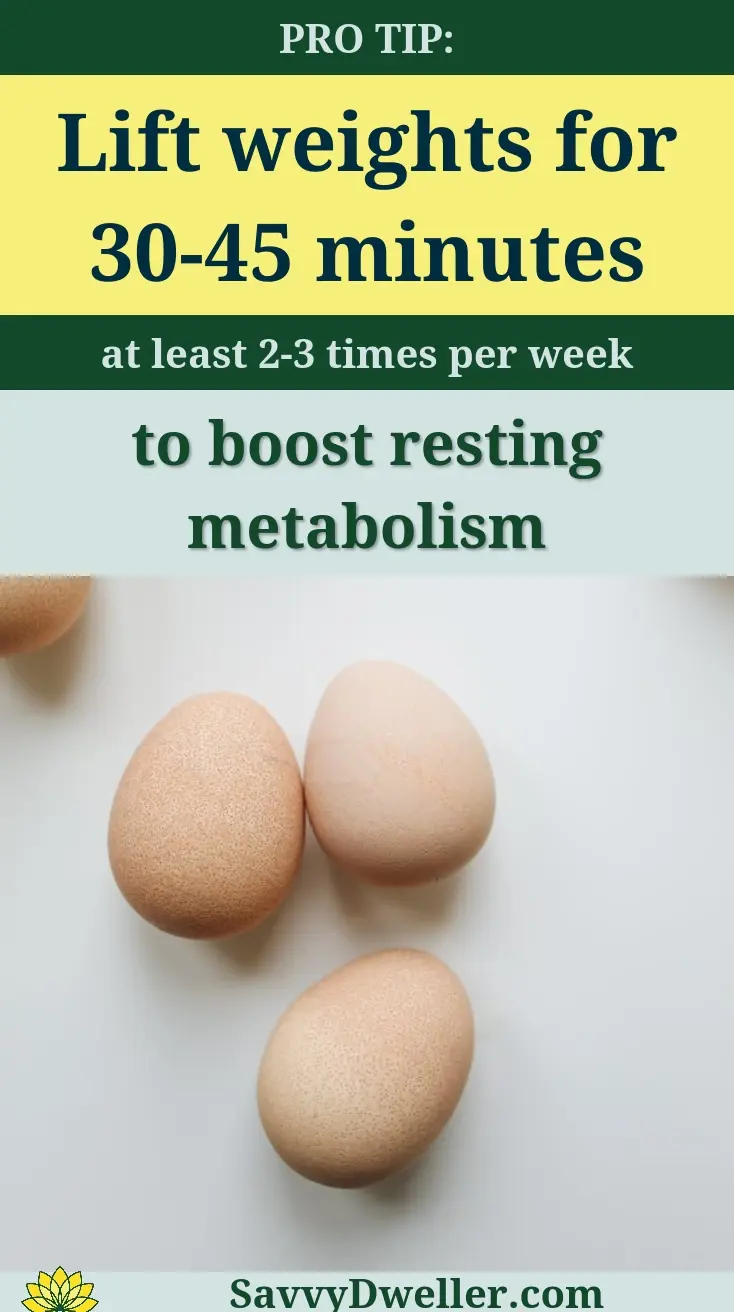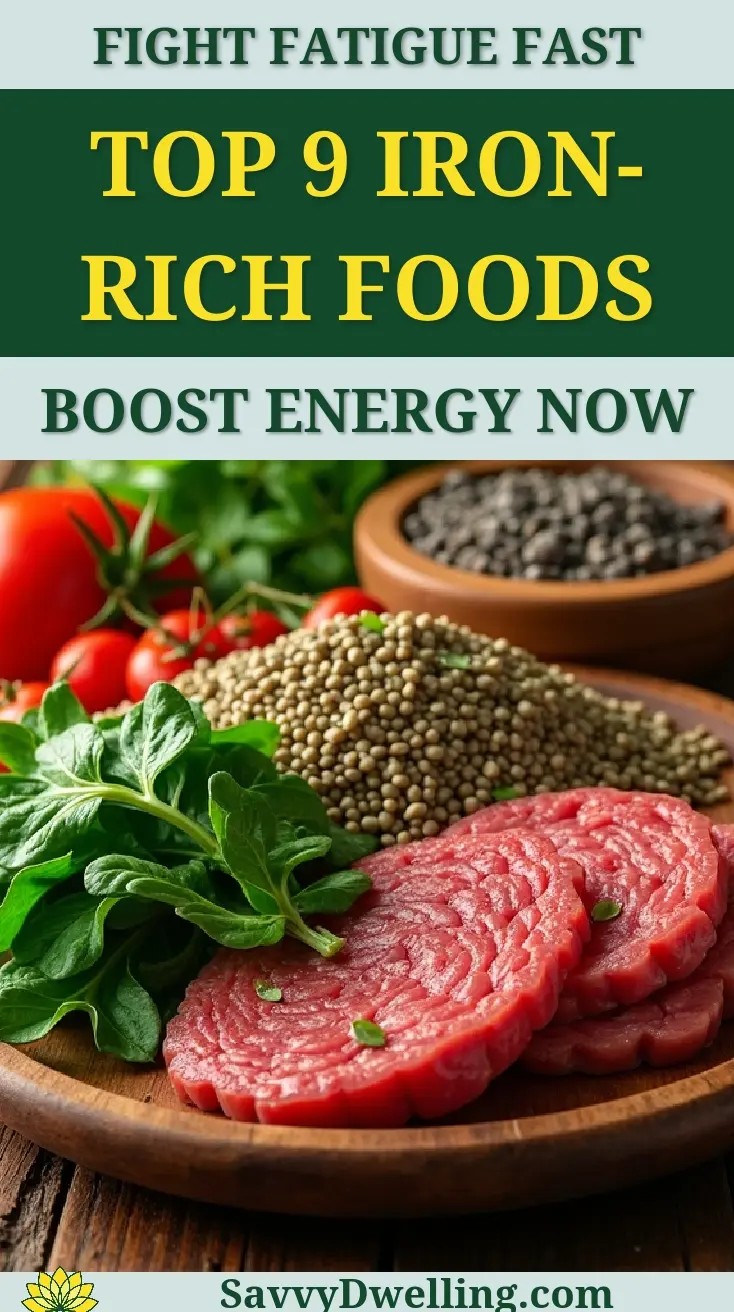How to Lose Weight After 40 (6 Science-backed Hacks That Actually Work)
Feeling frustrated because the weight-loss strategies that worked in your 20s and 30s suddenly seem ineffective? You’re not alone—your body has undergone significant metabolic and hormonal changes that make traditional dieting approaches less successful after 40. The reality is that your metabolism has naturally slowed, muscle mass has begun declining, and hormonal fluctuations are working against your weight-loss efforts.
This guide provides six research-backed strategies specifically designed for your body’s current needs, not outdated advice meant for younger adults. We’ve simplified complex nutritional science and metabolic research into practical, actionable steps that work with your body’s changes rather than against them. These evidence-based hacks will help you achieve sustainable weight loss while maintaining your energy, muscle mass, and overall health.
Contents
- At a Glance: The Best Solutions
- The Science Made Simple: Why Weight Loss Changes After 40
- 1. Prioritize Protein to Support Muscle Preservation
- 2. Incorporate Strength Training to Boost Metabolism
- 3. Optimize Sleep Quality for Weight Management
- 4. Use Strategic Meal Timing and Portion Control
- 5. Manage Stress to Support Healthy Weight
- 6. Consider Time-restricted Eating Patterns
- Common Mistakes to Avoid When Losing Weight After 40
- Frequently Asked Questions
- Final Words
At a Glance: The Best Solutions
Quick Reference Table for Weight Loss Success After 40
| Strategy | Key Action | Why It Works |
|---|---|---|
| Prioritize Protein | Aim for 25–30g per meal | Supports muscle retention, which keeps metabolism active during weight loss after 40 |
| Strength Training | Lift weights 2–3x/week | Counters age-related muscle loss and boosts resting calorie burn-critical for how to lose weight in your 40s |
| Optimize Sleep | Target 7–9 hours nightly | Reduces cortisol spikes that drive belly fat storage, especially for women over 40 |
| Portion Awareness | Use hand-size or plate method | Helps manage calorie intake without constant counting-ideal for busy adults losing weight in their 40’s |
| Stress Management | Practice 5–10 min daily mindfulness | Lowers emotional eating triggers and supports hormonal balance for weight loss after 40 for women and men |
| Time-Restricted Eating | Limit eating to 8–10 hour window | Improves insulin sensitivity and fat burning-effective for how to lose stomach fat over 40 |
Evidence-Based Strategies Summary
Successful weight loss after 40 isn’t about extreme diets or punishing workouts. It’s about working with your body’s natural shifts-not against them. Combining higher protein intake with consistent strength training preserves lean muscle, which is your metabolic engine as you age. Meanwhile, quality sleep and stress control directly influence hormones like cortisol and insulin that drive fat storage, especially around the abdomen.
Portion control doesn’t mean deprivation-it means awareness. Using simple visual cues helps you eat satisfying meals without overdoing calories. And time-restricted eating aligns your food intake with your body’s circadian rhythm, enhancing fat metabolism naturally.
- Durable, affordable, sustainable habits beat short-term fixes every time
- Women over 40 often see better results with consistent protein + resistance training due to sharper declines in estrogen
- Men in their 40s benefit significantly from sleep optimization to maintain testosterone levels that support fat loss
These six science-backed hacks form a system-not a sprint. You’re not trying to lose weight after 40 fast; you’re building a lifestyle that supports long-term health, energy, and confidence in your 40s and beyond.
The Science Made Simple: Why Weight Loss Changes After 40
Metabolic Shifts That Happen in Your 40s
After 40, your resting metabolic rate-the number of calories you burn at rest-naturally slows by about 2–3% per decade. This means your body burns fewer calories doing the same activities you did in your 30s, making weight gain easier and weight loss harder without adjustments to diet or movement.
This metabolic slowdown is real, but it’s not a life sentence-it’s a signal to shift your strategy.
Hormonal Changes That Impact Weight
For women, perimenopause often begins in the 40s, causing fluctuations in estrogen and progesterone that can drive fat storage-especially around the abdomen. Men experience a gradual drop in testosterone, which affects muscle maintenance and fat distribution.
These hormonal shifts don’t mean you can’t lose weight after 40; they mean your approach must account for them with targeted nutrition, movement, and recovery.
Muscle Mass Decline and Its Effects
Starting around age 30, you lose 3–8% of muscle mass per decade-a process called sarcopenia. By your 40s, that loss accelerates if you’re inactive. Less muscle means fewer calories burned daily and a higher risk of metabolic slowdown.
Preserving lean muscle isn’t just about looking strong-it’s your metabolic insurance policy for sustainable weight loss in your 40s and beyond.

1. Prioritize Protein to Support Muscle Preservation
How Much Protein You Need After 40
General guidelines suggest 0.8g of protein per kg of body weight, but research shows adults over 40 benefit from 1.2–2.0g per kg to counteract age-related muscle loss-especially during weight loss.
Calculating Your Personal Protein Goals
- Convert your weight from pounds to kilograms (divide by 2.2).
- Multiply your weight in kg by 1.6 (a strong middle ground for most).
- Divide that total by 4 meals/snacks to get your protein target per eating occasion.
Example: A 165-lb person (75 kg) needs about 120g protein daily-roughly 30g per meal.
Best Protein Sources for Weight Loss
- Lean poultry (chicken breast, turkey)
- Fatty fish (salmon, sardines-rich in omega-3s)
- Eggs and Greek yogurt (full-fat or 2% for satiety)
- Plant-based options: lentils, edamame, tofu, tempeh
- Whey or pea protein isolate (for smoothies or post-workout)
Strategic Protein Timing Throughout the Day
Distributing protein evenly across meals-rather than loading it all at dinner-maximizes muscle protein synthesis, which declines with age. Aim for 25–40g per meal.
Pre and Post-Workout Protein Guidelines
- Pre-workout (30–60 min before): 15–20g protein + small carb (e.g., Greek yogurt with berries).
- Post-workout (within 45 min): 20–30g protein + modest carbs (e.g., protein shake with banana or hard-boiled eggs with whole-grain toast).
Simple Meal Ideas That Pack Protein Power
- Overnight oats with chia, almond butter, and whey protein (30g+)
- Large salad with grilled chicken, chickpeas, feta, and pumpkin seeds
- Turkey and avocado lettuce wraps with a side of cottage cheese
- Miso soup with tofu, edamame, and seaweed for a light but protein-rich dinner
Also See: The Top 10 Foods to Eat for Better Eye Health
2. Incorporate Strength Training to Boost Metabolism
Why Strength Training Becomes Critical After 40
Cardio burns calories in the moment, but strength training builds and preserves muscle-which burns calories 24/7. For anyone over 40, it’s the most effective exercise to reshape metabolism and combat age-related fat gain.
The Muscle-Metabolism Connection
Each pound of muscle burns about 6–10 calories per day at rest-more than double that of fat. More importantly, muscle improves insulin sensitivity, helping your body use glucose efficiently instead of storing it as fat-key for those seeking how to lose stomach fat over 40.
Beginner-friendly Home Strength Workouts
You don’t need a gym. With minimal equipment, you can build strength safely and effectively at home-ideal for busy adults navigating weight loss in my 40s.
Essential Equipment You’ll Need
- Adjustable dumbbells (or resistance bands)
- A sturdy chair (for step-ups, triceps dips)
- Yoga mat (for comfort and stability)
- Timer or free workout app (for structure)
20-Minute Full-Body Routine
- Bodyweight squats – 12 reps
- Push-ups (knees or wall version if needed) – 10 reps
- Bent-over dumbbell rows – 12 reps per arm
- Glute bridges (add dumbbell on hips for intensity) – 15 reps
- Plank hold – 30–45 seconds
- Repeat the circuit 3 times with 60 seconds rest between rounds.
This routine supports exercise after 40 to lose weight by engaging major muscle groups without high joint impact.
Progressive Training for Continued Results
Your body adapts quickly-so you must evolve your routine. Every 2–3 weeks, increase weight, reps, or time under tension.
- Add 2–5 lbs to lifts when 12 reps feel easy.
- Slow down the lowering phase of each movement (e.g., 4 seconds down on a squat).
- Reduce rest time between sets from 60 to 45 seconds.
Progressive overload isn’t about lifting heavy-it’s about consistently challenging your muscles to grow stronger, which directly fuels weight loss over 40.
3. Optimize Sleep Quality for Weight Management
How Poor Sleep Sabotages Weight Loss After 40
When you’re over 40, even one night of restless sleep can throw off your hunger signals and energy levels the next day. Poor sleep reduces leptin-the hormone that tells you you’re full-while increasing ghrelin, which drives cravings, especially for carbs and sugar.
Stress Hormones and Sleep Connection
Lack of rest elevates cortisol, your body’s main stress hormone. High cortisol not only ramps up appetite but also encourages fat storage-particularly around your midsection-making it harder to lose stomach fat over 40. This creates a cycle where stress disrupts sleep, and poor sleep worsens stress, complicating weight loss efforts.
Creating Your Ideal Sleep Environment
Your bedroom should feel like a retreat, not a multitasking zone. Remove work devices, keep surfaces clutter-free, and invest in blackout curtains or a sleep mask if streetlights interfere.
Temperature and Light Control
- Keep your room cool-between 60–67°F (15–19°C)-to support natural melatonin release.
- Dim lights an hour before bed; swap bright overheads for warm-toned lamps.
- Turn off screens or use blue-light filters after 8 p.m. to protect your circadian rhythm.
Establishing a Consistent Sleep Schedule
Going to bed and waking at the same time—even on weekends—helps regulate your internal clock. This consistency improves sleep depth and supports metabolism, a key factor in weight loss after 40. Incorporating natural strategies for a better night’s sleep can further enhance your overall well-being.
Pre-Sleep Routine for Better Rest
- 90 minutes before bed: Stop eating and avoid caffeine or heavy meals.
- 60 minutes out: Take a warm bath or do light stretching to lower core body temperature gradually.
- 30 minutes out: Read a physical book or listen to calming music-no screens.
- At bedtime: Practice 4-7-8 breathing (inhale 4 sec, hold 7, exhale 8) to calm your nervous system.

4. Use Strategic Meal Timing and Portion Control
Understanding Portion Sizes for Your 40s
As metabolism slows in your 40s, the same portions that kept you lean in your 30s may now lead to gradual weight gain. Learning to eyeball appropriate servings-without counting every calorie-can make weight loss after 40 feel manageable, not punishing.
Visual Portion Guide
- Protein (chicken, fish, tofu): palm-sized (about 3–4 oz)
- Carbs (rice, pasta, oats): cupped hand (½–¾ cup cooked)
- Fats (nuts, oil, avocado): thumb-sized (1–2 tbsp or ¼ avocado)
- Vegetables: two handfuls or more
Plate Method for Balanced Meals
Fill half your plate with non-starchy veggies (spinach, broccoli, peppers), one-quarter with lean protein, and one-quarter with complex carbs. Add a small serving of healthy fat on the side. This simple visual strategy supports steady energy and helps you lose weight in your 40s without constant hunger.
Meal Prep Strategies That Save Time
With busy schedules, cooking nightly isn’t realistic for most people over 40. Prepping key components ahead cuts decision fatigue and keeps you on track with your weight loss goals.
Weekly Prep Session Guide
- Choose 2–3 protein sources (e.g., grilled chicken, hard-boiled eggs, lentils).
- Roast 2–3 trays of mixed veggies (sweet potatoes, Brussels sprouts, zucchini).
- Cook one complex carb batch (quinoa, brown rice, or farro).
- Portion snacks into grab-and-go containers (Greek yogurt, apple slices with almond butter).
- Store meals in clear containers so you see what’s ready-out of sight often means out of mind.
Smart Snacking Between Meals
Instead of reaching for chips or cookies, pair protein with fiber to stay full longer. Try cottage cheese with berries, a small handful of almonds with an orange, or hummus with bell pepper strips. These choices stabilize blood sugar and support healthy eating habits that are crucial for weight loss, especially after 40 for women and men alike.
5. Manage Stress to Support Healthy Weight
How Chronic Stress Affects Weight After 40
Chronic stress doesn’t just drain your energy-it actively works against your efforts to lose weight in your 40s. When stress becomes constant, your body holds onto fat as a survival mechanism, especially around the abdomen.
Cortisol and Belly Fat Connection
Elevated cortisol increases visceral fat storage-the dangerous kind that wraps around organs and raises risk for insulin resistance and heart disease. This is why managing stress is a non-negotiable part of any plan to lose belly fat over 40, especially for women experiencing hormonal shifts.
Daily Stress-reduction Techniques
You don’t need hours of meditation to reset your nervous system. Short, consistent practices throughout the day build resilience and support sustainable weight loss over 40. These easy meditation techniques can help you get started.
5-Minute Mindfulness Practices
- Box breathing: Inhale 4 sec, hold 4, exhale 4, hold 4-repeat for 2 minutes.
- Body scan: Close your eyes and mentally check in from head to toe, releasing tension.
- Gratitude pause: Name 3 things you’re thankful for-this shifts focus from stress to calm.
Movement-Based Stress Relief
Walking, yoga, or even dancing to a favorite song lowers cortisol faster than sitting still. A 10-minute brisk walk after meals not only aids digestion but also reduces emotional eating triggers-key for losing weight after 40. Incorporating these enjoyable activities into daily routines helps manage stress levels effectively. Explore additional strategies in a comprehensive guide to reducing cortisol levels naturally for lasting well-being.
Building Resilience Through Social Connection
Loneliness spikes stress hormones just like physical threats do. Prioritize regular connection-even a 15-minute call with a friend can lower cortisol and improve motivation. Join a walking group, book club, or online community focused on healthy living in your 40s. Social support isn’t just comforting-it’s a science-backed tool for weight loss after 40.
6. Consider Time-restricted Eating Patterns
Time-restricted eating-a form of intermittent fasting (IF)-aligns food intake with your body’s natural circadian rhythm, which can support weight loss after 40 by improving metabolic flexibility and reducing late-night snacking.
What Intermittent Fasting Can Do for You
Intermittent fasting doesn’t focus on what you eat but when. For those navigating how to lose weight in your 40s, IF may help regulate insulin sensitivity, reduce inflammation, and enhance fat burning-especially helpful for tackling stubborn belly fat over 40.
Different IF Approaches to Try
- 16:8 method: Fast for 16 hours, eat within an 8-hour window (e.g., 12 p.m. to 8 p.m.).
- 14:10 method: A gentler start-fast 14 hours, eat within 10 (ideal for how to lose weight after 40 for women).
- 5:2 approach: Eat normally five days a week; limit calories to 500–600 on two non-consecutive days.
- Alternate-day fasting: Alternate between normal eating and fasting or very low-calorie days (best with medical guidance).
How to Start Time-restricted Eating Safely
If you’re exploring ways to lose weight after 40, ease into time-restricted eating. Start by shortening your eating window gradually and paying close attention to how your body responds-especially if you have blood sugar concerns or take medications.
16:8 Method for Beginners
- Pick your window: Choose an 8-hour window that fits your daily routine (e.g., 11 a.m.–7 p.m.).
- Stay hydrated: Drink water, herbal tea, or black coffee during your fasting period.
- Break your fast wisely: Start with a protein-rich, fiber-filled meal to stabilize energy and avoid blood sugar spikes.
- Don’t overeat during your window: Keep portions in check-fasting isn’t a free pass to double portions.
- Track how you feel: Note energy levels, sleep quality, and hunger cues in a journal for the first two weeks.
Adjusting Eating Windows to Your Lifestyle
Your ideal eating schedule should support-not fight-your life. Early risers might prefer a 9 a.m.–5 p.m. window, while night owls may do better with noon–8 p.m. The goal is consistency, not rigidity. For weight loss after 40 for women, syncing your eating window with daylight hours can support hormonal balance.
Signs This Approach is Working for You
Positive shifts include steady energy without mid-afternoon crashes, reduced cravings for sugary snacks, and gradual fat loss-especially around the waistline. You might also notice improved sleep and digestion. Weight loss in your 40s with time-restricted eating is typically steady, not dramatic, and sustainable when paired with adequate protein and movement.
Common Mistakes to Avoid When Losing Weight After 40
Extreme Calorie Restriction Pitfalls
Slashing calories too aggressively signals your body to hold onto fat and break down muscle-counterproductive for how to get in shape after 40. Aim for a modest deficit (300–500 calories/day) while fueling with nutrient-dense foods to protect metabolism and energy.
Ignoring Strength Training
Skipping resistance work is one of the biggest barriers to effective weight loss over 40. Without muscle stimulation, you lose lean mass, which slows metabolism and makes how to lose stomach fat over 40 much harder. Even two weekly strength sessions can preserve-and rebuild-metabolism-boosting muscle.
Expecting the Same Results As Your 20s
Your body now responds differently than it did a decade or two ago. Losing weight in your 40’s often takes more patience, consistency, and strategy. Progress may be slower, but it’s more sustainable. Focus on non-scale victories like better sleep, more stamina, and clothes fitting looser.
Skipping Recovery and Rest Days
Recovery isn’t optional-it’s essential. Overtraining without rest increases cortisol, which can promote belly fat storage and stall progress in your weight loss in my 40s journey. Schedule at least one full rest day per week and prioritize sleep to let your body repair and rebalance. Exercise after 40 to lose weight works best when paired with smart recovery.

Frequently Asked Questions
How Can I Stay Motivated When Weight Loss Progress is Slower After 40?
Shift your focus to non-scale victories like improved energy levels, better sleep, or increased strength during workouts. These indicators often show progress before the scale moves. Setting small, achievable goals, such as walking an extra 1,000 steps daily or drinking more water, can build momentum and keep you motivated through plateaus.
Consider tracking habits instead of just weight, using apps or journals to log consistent protein intake, workout frequency, or stress-reduction practices. Enlisting a friend or joining a support group can provide accountability, and remembering that slow, steady loss is more sustainable helps maintain perspective.
What Role Does Hydration Play in Weight Loss After 40?
Staying hydrated is crucial because dehydration can slow metabolism and mimic hunger cues, leading to overeating. Aim for at least 8-10 glasses of water daily, and drink a glass before meals to promote fullness. Herbal teas or infused water with lemon can make hydration more appealing if plain water is boring.
Monitor hydration — check urine color; pale yellow indicates good hydration. Additionally, water-rich foods like cucumbers or watermelon can contribute to fluid intake. Proper hydration supports digestion and nutrient absorption, enhancing the effectiveness of your weight loss efforts. Being aware of your hydration levels is crucial, as dehydration can impact your overall health. Watch for signs like dry mouth or fatigue, and know how to rehydrate fast when needed.
How Should I Adjust My Approach if I Have a Medical Condition Like Thyroid Issues?
First, consult with your healthcare provider to tailor plans around your specific condition, as thyroid disorders can affect metabolism. Emphasize nutrient-dense foods rich in selenium and zinc, like Brazil nuts or legumes, which support thyroid function. Foods that are high in selenium can play an important role in thyroid health. Incorporating selenium-rich foods into your diet can help optimize thyroid hormone production and function. Avoid extreme calorie restriction, which can worsen hormonal imbalances.
Incorporate gentle, consistent exercise like walking or yoga if fatigue is a concern, and prioritize stress management since cortisol impacts thyroid health. Regular monitoring of symptoms and lab values with your doctor ensures safe progress, and patience is key as weight loss may be slower but still achievable. Selecting the right foods can further support thyroid health. A well-rounded diet that includes certain nutrients is essential for optimal thyroid function.
Can Social Events or Dining Out Fit Into a Weight Loss Plan After 40?
Yes, by planning ahead-review menus online to choose grilled proteins and vegetable-based sides, and ask for dressings or sauces on the side. Practice mindful eating by savoring each bite and stopping when 80% full, which aligns with portion control strategies.
If alcohol is involved, opt for lower-calorie options like wine spritzers or light beer, and limit intake to one drink. Don’t skip meals beforehand to “save calories,” as this can lead to overindulgence. Focus on socializing rather than food, and get back on track with your next meal without guilt.
Final Words
Weight loss after 40 doesn’t have to feel like an uphill battle. These six science-backed strategies work because they address the specific metabolic and hormonal changes your body experiences in your 40s and beyond. The key is consistency, not perfection-small, sustainable changes compound over time to create lasting results.
Remember, your body is incredibly adaptable at any age. By focusing on protein intake, strength training, quality sleep, strategic eating patterns, stress management, and mindful meal timing, you’re giving yourself the best chance for success. Start with one or two strategies that feel most manageable, then gradually build on your progress.
Ready to transform your approach to weight loss? Begin implementing these evidence-based hacks today and experience the difference they can make. For more wellness tips and home solutions that support your healthy lifestyle, visit Savvy Dwelling and stay connected for ongoing guidance on your wellness journey.


